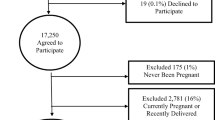Abstract
Uterine Prolapse (UP) is a major cause of mortality and morbidity among women in low-income countries like Nepal. More than 1 million women in Nepal suffer from this condition and most of them belong to the reproductive age. The cause and consequence for UP in Nepalese women is mainly gender discrimination. Early marriage, multiple births, lack of skilled birth attendants during delivery, continuous work throughout their pregnancies and soon after giving birth are the risk factors and causes of UP. It affects many aspects of a woman’s quality of life, which ranges from physical discomfort, psychological, social and sexual lifestyle restrictions. Lack of knowledge of casual and preventative measures and perception of UP as normal phenomenon is the important barriers to access to treatment. Strong, effective and comprehensive strategies should address this underlying discrimination including socio-cultural discrimination, which could empower women to control their exposure to UP.
Similar content being viewed by others
References
Bijalwan RP, Bhagavatula M, Semwal VD, Rawat P, Anand V. Morbidity of uterine prolapsed among the women in the chakrata block of Dehradun District. Indian J Community Health. 2015;27:103–9.
Bodner-Adler B, Shrivastava C, Bodner K. Risk factors for uterine prolapse in Nepal. Int Urogynecol J. 2007;18:1343–6.
Olsen AL, Smith VJ, Bergstrom JO, Colling JC, Clark AL. Epidemiology of surgically managed pelvic organ prolapse and urinary incontinence. Obstet Gynecol. 1997;89:501–6.
Dhital R, Otsuka K, Poudel KC, Yasuoka J, Dangal G, Jimba M. Improved quality of life after surgery for pelvic organ prolapse in Nepalese women. BMC Womens Health. 2013;13:22. https://doi.org/10.1186/1472-6874-13-22.
Subedi M. Uterine prolapse, mobile camp approach and body politics in Nepal 1. State society and health in Nepal. 1st ed: Routledge India; 2018. p 90–106.
United Nations Population Fund (UNFPA). Status of reproductive morbidities in Nepal. 2006. Accessed on June 2016. Available at: http://un.org.np/sites/default/files/report/tid_67/2009-03-17-UNFPA-status-modbidity.pdf.
Shrestha B, Onta S, Choulagai B, Poudyal A, Pahari DP, Uprety A, et al. Women’s experiences and health care-seeking practices in relation to uterine prolapse in a hill district of Nepal. BMC Womens Health. 2014;14:20. https://doi.org/10.1186/1472-6874-14-20.
United Nations Population Fund. Government of Nepal. Ministry of Health. Family Health Division. Study on selected reproductive health morbidities among women attending reproductive health camps in Nepal. 2016. Accessed on Aug 2018. Available at: https://nepal.unfpa.org/sites/default/files/pub-pdf/RH%20Morbidity%20study_0.pdf.
Radl CM, Rajwar R, Aro AR. Uterine prolapse prevention in eastern Nepal: the perspectives of women and health care professionals. Int J Womens Health. 2012;4:373–82.
Eleje G, Udegbunam O, Ofojebe C, Adichie C. Determinants and management outcomes of pelvic organ prolapse in a low resource setting. Ann Med Health Sci Res. 2014;4:796–801.
Durnea CM, Khashan AS, Kenny LC, Durnea UA, Smyth MM, O’Reilly BA. Prevalence, etiology and risk factors of pelvic organ prolapse in premenopausal primiparous women. Int Urogynecol J. 2014;25:1463–70.
Amnesty International. Unnecessary burden: gender discrimination and uterine prolapse in Nepal. 2014. Accessed on June 2016. Available at: https://www.amnesty.org/en/documents/document/?indexNumber=asa31%2F001%2F2014&language=en.
Government of Nepal and United Nations Development Programme. Nepal human development report. 2004.
Earth B, Sthapit S. Uterine prolapse in rural Nepal: gender and human rights implications. A mandate for development. Cult Health Sex. 2002;4:281–96.
Shrestha B, Onta S, Choulagai B, Paudel R, Petzold M, Krettek A. Uterine prolapse and its impact on quality of life in the Jhaukhel–Duwakot health demographic surveillance site, Bhaktapur, Nepal. Glob Health Action. 2015;8:28771. https://doi.org/10.3402/gha.v8.28771.
Chaudhary A. Health related quality of life of women suffering from uterine prolapse before and after six months of surgery. Health. 2014;6:350–5.
Shrestha A, Lakhey B, Sharma J, Singh M, Shrestha B, Singh S. Prevalence of uterine prolapse amongst gynecology OPD patients in Tribhuwan university teaching hospital in Nepal and its socio-cultural determinants. Res Cent Women. 2009. Accessed on Mar 2018. Available at: http://www.who.int/woman_child_accountability/ierg/reports/2012_18N_UPResearch_study_Nepal.pdf.
Pradhan S. Unheeded agonies: a study of uterine prolapse prevalence and its causes in Siraha and Saptari Districts, Nepal. Kathmandu: Center for Agro-Ecology and Development (CAED); 2007.
Shah P. Uterine prolapse and maternal morbidity in Nepal: a human rights imperative. Drexel L Rev. 2009;2:491–536.
Gulland A. Gender discrimination is blamed for high rates of uterine prolapse in Nepal. BMJ. 2015;348:1756. https://doi.org/10.1136/bmj.g1756.
Palm SJ. The value of sustainable protocol to address uterine prolapse in Nepal: Health camp, awareness education, and employment strategy. Eighth Annual Himalayan Research Policy Conference. 2013.
Giarenis I, Robinson D. Prevention and management of pelvic organ prolapse. F1000Prime Rep. 2014;6:77. https://doi.org/10.12703/P6-77.
Author information
Authors and Affiliations
Corresponding author
Ethics declarations
Conflicts of interest
None.
Rights and permissions
About this article
Cite this article
Khadgi, J., Poudel, A. Uterine prolapse: a hidden tragedy of women in rural Nepal. Int Urogynecol J 29, 1575–1578 (2018). https://doi.org/10.1007/s00192-018-3764-6
Received:
Accepted:
Published:
Issue Date:
DOI: https://doi.org/10.1007/s00192-018-3764-6



